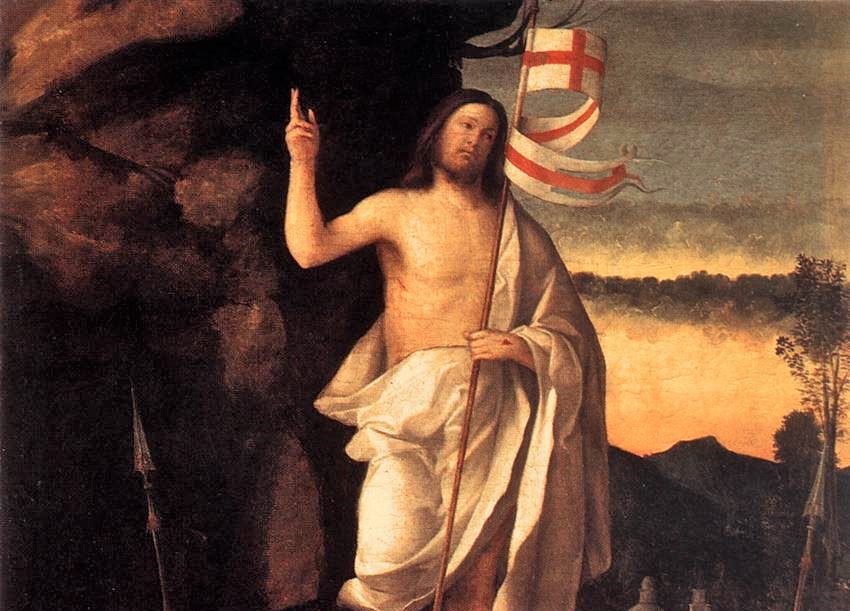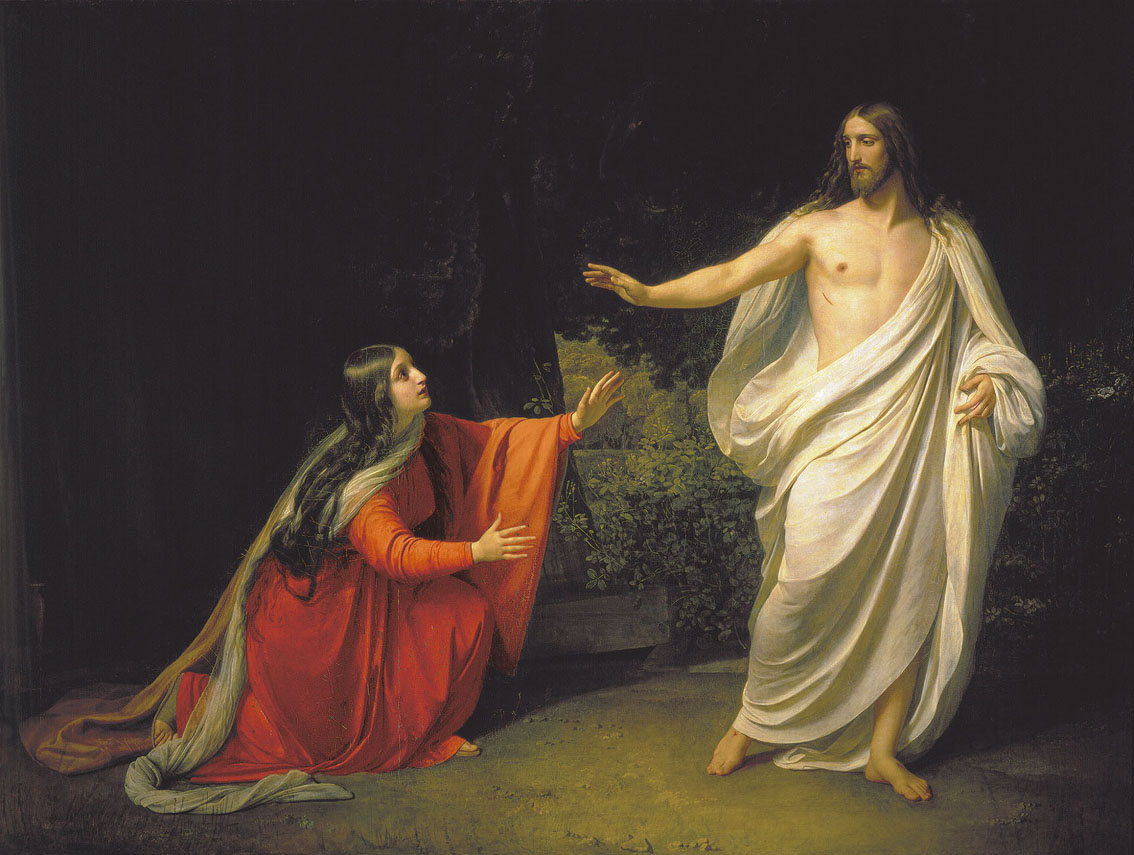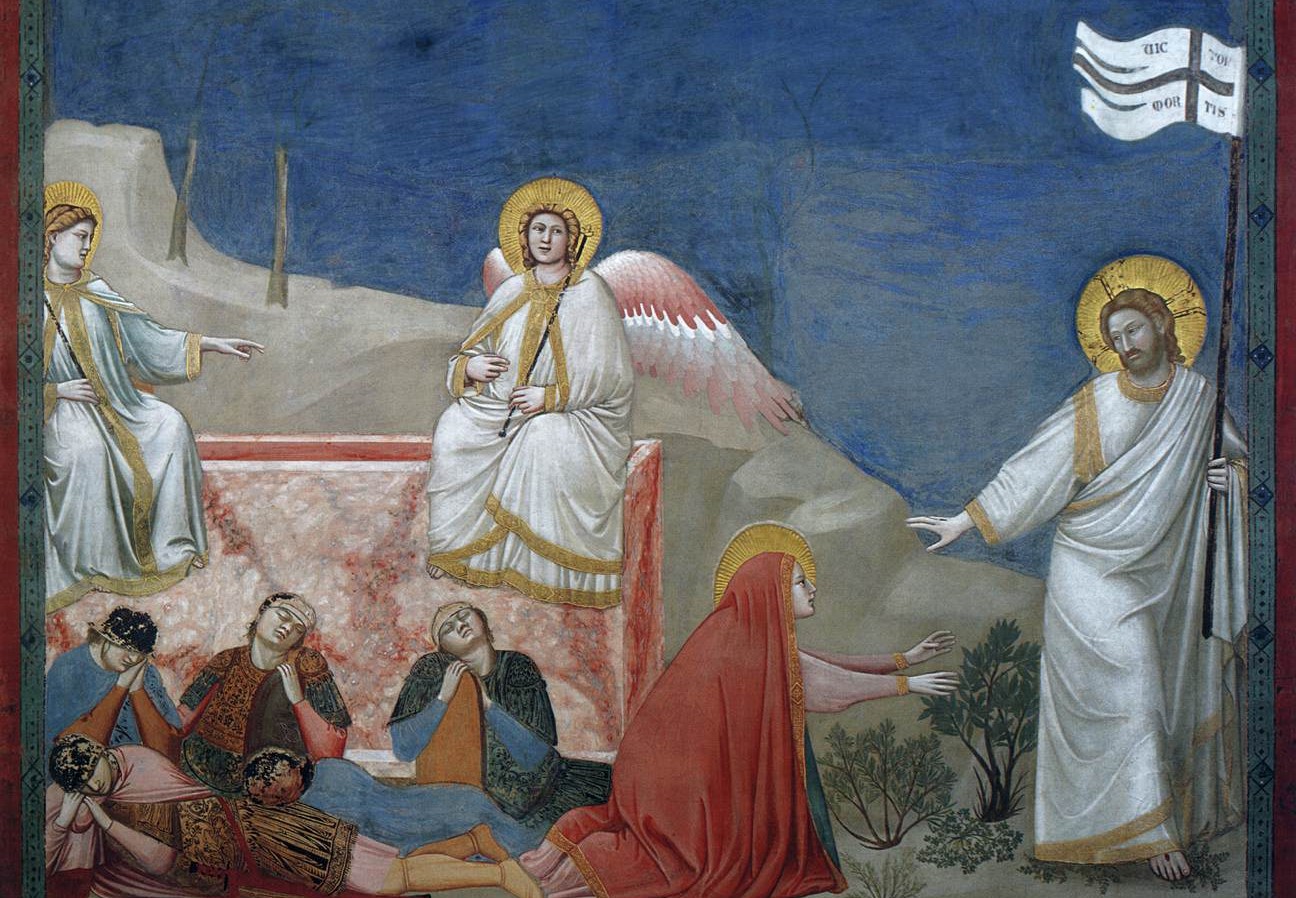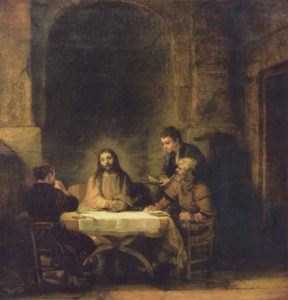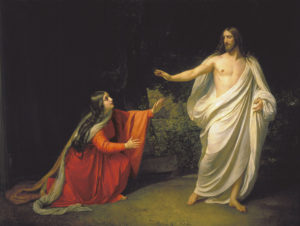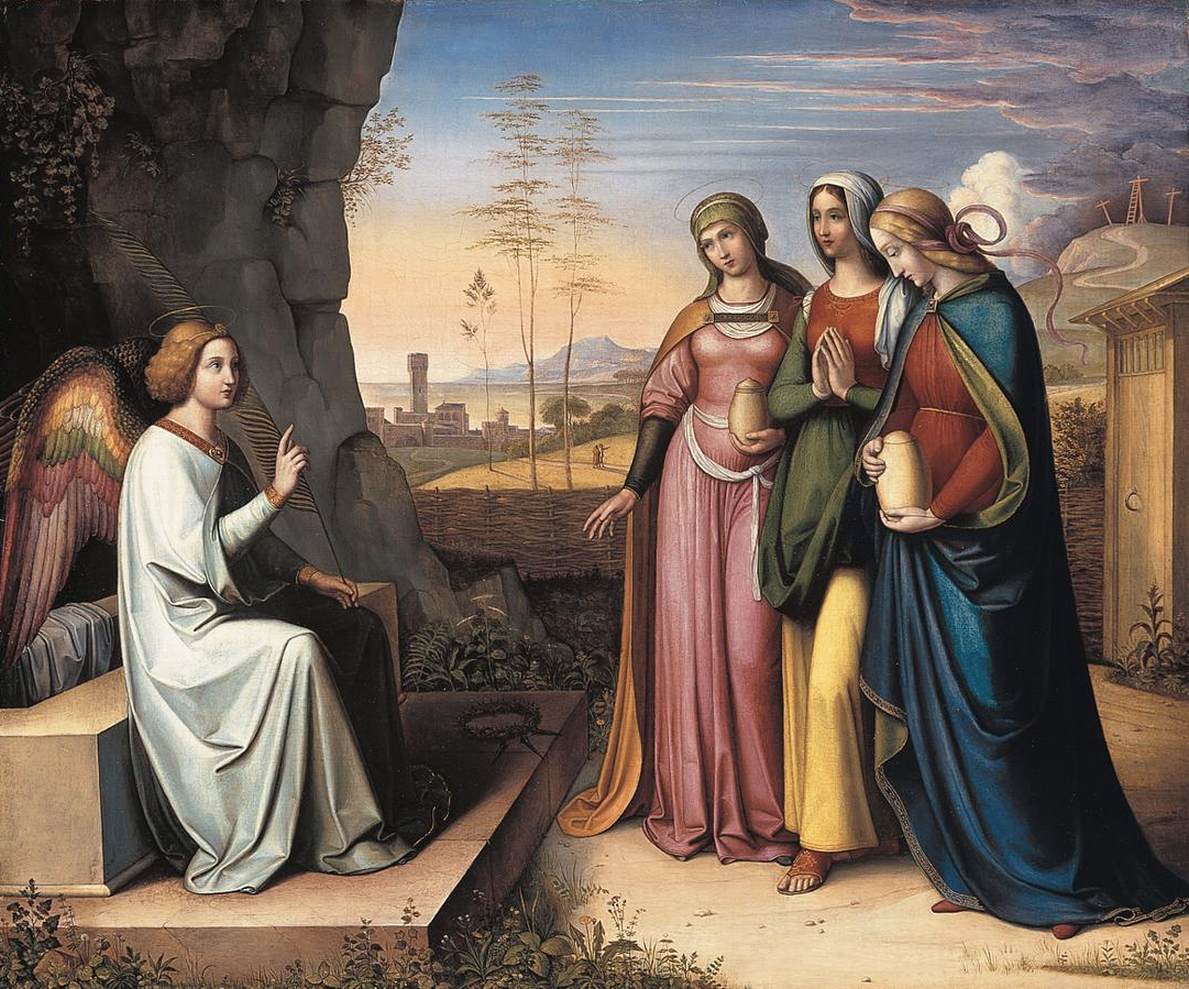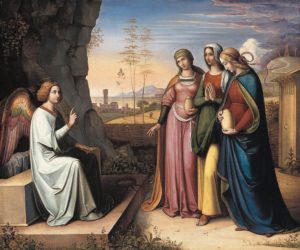There is something of a hidden quality to the resurrection appearances that has always puzzled me. St. Peter gives voice to this when he says to Cornelius,
God raised Jesus from the dead on the third day and granted that he be visible, not to all people, but to us, the witnesses chosen by God in advance, who ate and drank with him after he rose from the dead. He commissioned us to preach to the people and to testify that he is the one appointed by God as judge of the living and the dead (Acts 10:41-42).
Note that Jesus did not appear openly to all but rather only to some. Why? It is so different from what most of us would do!
If I were God (and it is very good for you that I am not), I would rise from the dead very dramatically. Perhaps I would summon people to my tomb with trumpet blasts and then emerge amid great fanfare (including a multitude of angels), inspiring awe and striking fear in the hearts of the enemies who had killed me. Or maybe I would ride down on a lightning bolt right into the temple precincts and then go up to the high priest and tell him to seek other employment. Surely it would be an event that would never be forgotten! It would draw many to faith, would it not?
Yet the Lord does none of this! Not only did He appear only to some after His resurrection, but the dramatic moment of the resurrection itself was apparently witnessed by no one at all. Instead of emerging from the tomb in broad daylight to the sound of trumpets, the Lord seems to have come forth before dawn to the sound of nothing but crickets chirping. Although St. Matthew mentions an earthquake causing the rolling back of the stone and the guards being stunned into unconsciousness, it appears that Jesus had already risen from the dead before the stone was rolled back.
Such a hidden event! It was the greatest event the world has ever known, and yet it was hidden from human eyes. No, this is not our way at all; Cecil B. DeMille, the great Hollywood director of epic movies, would not be pleased.
Jesus made one appearance to a large group, which Paul relates here:
He appeared to Cephas, then to the twelve. After that He appeared to more than five hundred brethren at one time, most of whom remain until now, but some have fallen asleep (1 Cor 15:5-6).
He appeared to more than five hundred people at once, yet no details are supplied! Where did it happen? When? What did the Lord say? What did He do?
Then there are the resurrection appearances that never happened (but to worldly minds should have): Jesus’ appearance to His accusers and persecutors, to Caiaphas, to the Sanhedrin, to Pilate, to all who jeered at Him as He hung on the cross. Surely, they deserved a good dressing down—and it probably would’ve been good for them as well. Who knows, maybe they would have fallen to their knees and converted on the spot; maybe they would have worshiped Jesus.
Such are my thoughts on the strange and hidden quality of the resurrection. Why was it so hidden? Why so selective an audience? Ultimately, I can only venture a guess, a kind of theological hunch, if you will.
My speculation is rooted in the identity of God: God is love (1 Jn 4:16). Love is not merely something God does, nor is it just one of His many attributes. Scripture says that God is love. It is in the nature of true love (as opposed to lust) for the lover to invite (or woo) his beloved rather than overwhelming, coercing, or forcing. The lover wants to be loved, but forcing his beloved into a fearful love would mean not receiving true love in return.
It is Satan’s nature to pressure, tempt, and overwhelm us in order to get us to sin. He is loud and loves to use fear as a motivator.
In contrast, God whispers. He calls us and gently draws us in. He provides evidence and supplies grace but does not overwhelm us with fearsome or noisy events. He is the still, small voice that Elijah heard after the fire and the earthquake (1 Kings 19:12). He has written His name in our hearts and whispers there quietly: Seek always the face of the Lord (1 Chron 16:11). At times He permits our life to be shaken up a bit, but even then it is more often something that He allows rather than directly causes.
God is generally not interested in making loud, flashy entrances or humiliating His opponents. He does not have a big ego. Even if He chose to compel the Temple leadership to worship Him by using shock and awe, it is unlikely that their faith response would have been genuine. Faith that needs to “see” isn’t really faith; one doesn’t need faith to believe what can be plainly seen.
Thus, the Lord does rise from the dead and He does supply evidence to witnesses who had faith—at least enough faith to be rewarded. He then sends these eyewitnesses to us, supplies His graces, and provides us with other evidence so that we can believe and love. None of this, however, is done in a way that overwhelms us or forces us to believe.
God is love and love seeks a free and faithful response. The hiddenness of the resurrection is an example of tender love. There’s only so much that the human person can take. So, the Lord rises quietly and appears (but only briefly) to some and then seems to withdraw—almost as if respectfully giving them time to process what they have experienced. He gives them time to deepen their faith and to come to terms with what was for them a completely new reality, one that would change their lives forever.
How different this is from the way we operate! So many of us think in terms of power, fame, glory, vindication, and conquest. How different God is! He is so often tender, hidden, and quiet. He doesn’t need to get “credit” for everything He does. He doesn’t need to crush His enemies. Rather, ruing the day on which their no might become a forever no, He works to win their love, always aiming for their conversion. Until our final breath, He is always calling, willing, and giving grace. His mercies how tender, how firm to the end, our maker, defender, redeemer, and friend.
Why was the resurrection so hidden? God is love, and love woos; it does not wound. It invites; it does not incite. It calls; it does not crush. It respects; it does not rule or seek revenge. Yes, God is love.
Of her glorious Groom, the Church and Bride says,
Listen! My beloved! There he stands behind our wall, gazing through the windows, peering through the lattice … [He speaks to her and says,] “Arise, my darling, my beautiful one, come with me” (Song 2:9-10).
Here’s how Cecil B. DeMille might do the Easter fire:
Cross-posted at the Catholic Standard: Why Was the Resurrection Such a Hidden Event?

